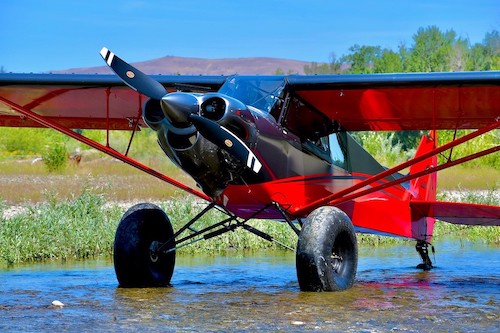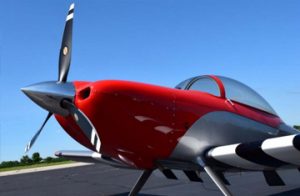
Building your own airplane is an adventure in itself, but for backcountry-bound kitplane owners, the journey has only just begun.
One of the most appealing aspects of homebuilding is the ability to customize your aircraft to fit your unique needs, style, and mission. If you’re thinking about dipping your toes into the world of off-airport adventures, there’s value in planning your backcountry modifications in advance — even while you’re still mid-build.

Hartzell Explorer Propeller
We have a few tips to help you equip your kitplane for backcountry fun:
While the propeller isn’t the first component you’ll install on your homebuilt aircraft, it should be one of the first decisions you make. Choosing the right propeller for your kitplane can make all the difference when it comes to optimizing your airplane’s overall efficiency and obtaining the specific performance characteristics you’re after.
At Hartzell Propeller, we offer an impressive lineup of lightweight composite and durable metal propellers for a wide variety of kitplane aircraft. Whether your goal is cruise speed or STOL performance, there’s a kitplane propeller to match your mission profile.
Some of our most popular propellers for backcountry/cross-country kitplane aircraft include:
The Explorer — If cruise speed is your priority, Hartzell’s Explorer prop is the proven choice for cross-country flying. This 3-blade propeller is configured with a lightweight Raptor series hub and carbon fiber composite blades. The Explorer is available for kitplanes powered by select Lycoming 320, 360, and 390 series engines.
The Pathfinder — Navigate the thrill of backcountry flying with the Pathfinder, optimized for short takeoff and landing (STOL) operations for pilots who need to get in and out of remote locations. This 3-blade propeller is configured with a lightweight Raptor series hub and carbon fiber composite blades and can be utilized on select Lycoming 360 and 390 series engines.
The Trailblazer — Hartzell’s Trailblazer prop has been propelling pilots in and out of the backcountry for nearly a decade now, while also getting float operators off of the step in no time. Utilizing a standard compact series hub and carbon fiber composite blades, the Trailblazer is available in both two and three-blade configurations. Experience the backcountry with the Trailblazer, powered by select Lycoming 360, 390, 540, 580 series engines.
Blended Airfoil — Hartzell’s widely popular Blended Airfoil prop is made for kitplane pilots who want to arrive at their destinations in the shortest amount of time. Optimized for cruise speed with cross-country flying in mind, the Blended Airfoil is a 2-blade propeller configured with a compact series hub and aluminum swept tip blades. This prop can be found on kitplanes with select Lycoming 360 and 390 series engines.
If you are building one of the popular kit aircraft, you may be able to buy a new Hartzell propeller from the kit manufacturer. Or, contact us about ordering directly from Hartzell Propeller.
Oversized tires are another must-have mod for backcountry flying, giving aircraft “land anywhere” capabilities while providing better ground clearance for the propeller. If you plan to land on gravel, sand, river rocks, or any other type of uneven or rough terrain, bush tires are a wise investment.
Perhaps the most important backcountry mod you can make to any airplane is to enhance your skills as the pilot. Although you don’t necessarily need special training to get into backcountry flying, it does require plenty of practice to become proficient and confident. Start by practicing basic skills and scenarios such as short field takeoffs, soft field landings, slips to landing, and landing over an obstacle at your home airport. As you get more comfortable, it’s still important to be aware of your own capabilities and limitations and those of your kitplane. Before landing at an unfamiliar airstrip for the first time, consult online forums for advice, or better yet, fly with an experienced backcountry pilot. Learning how to safely navigate unique airstrips is part of the fun and never-ending challenge of backcountry flying.
Interested in backcountry flying, but not sure how to choose your next destination? Look no further than the Recreational Aviation Foundation (RAF), an invaluable resource for today’s backcountry pilots. Based in Montana, the RAF is a non-profit on a mission to preserve, protect, maintain and create backcountry airstrips for recreational access. The RAF’s Airfield Guide provides a wealth of information (including safety briefings) on out-of-the-way airports and places that most pilots don’t know about.
For a limited time, members of the RAF can save $1,000 on the purchase of one of four new Hartzell backcountry propellers! To support the future of backcountry airstrips, Hartzell Propeller will also make a $250 contribution to the RAF mission for every member who buys a new Hartzell prop for backcountry flying. For more details, click here.